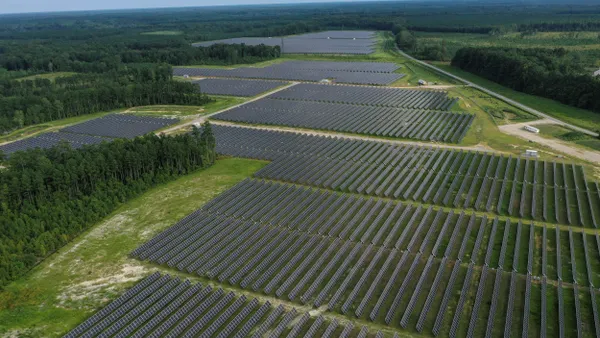Dive Brief:
-
The University of Toledo in Ohio has embarked on a project with the Department of Energy’s Pacific Northwest National Laboratory to test software that can automate energy use of buildings on its campus. The Northern Ohio Building-to-Grid Integration Demonstration will test various energy scenarios in real world settings at the Toledo campus, as well as at Case Western Reserve University's campus in Cleveland.
-
The project will tap into an existing 1 MW solar array on the campus and add battery storage to the system so solar power can be stored.
-
The project will use Voltron software will track price points and grid conditions in order to automate how the buildings interact with the surrounding grid.
Dive Insight:
It is not only the grid that is changing. Buildings are also changing how they use energy. Some are generating energy with wind or solar power and many are engaged in energy management programs.
All those functions increase the complexity of energy flows and require sophisticated technology to ensure reliability and efficiency.
The demonstration project is funded with about $1 million from the Department of Energy and corporate sponsors. The corporate partners in the project are FirstEnergy, Eaton, Siemens and Johnson Controls.
Simulated tests of energy control and flows will be conducted by the NASA Glenn Research Center.
The project aims to develop and showcase means of incorporating smart building technologies with conventional, solar and wind power while using batteries for backup power and to meet peak demand and store non-peak energy.
“What we’re doing is kind of preparing these campuses to be these living labs for these concepts,” Alexis Abramson, director of the Great Lakes Energy Institute at Case Western, told The Toledo Blade.













